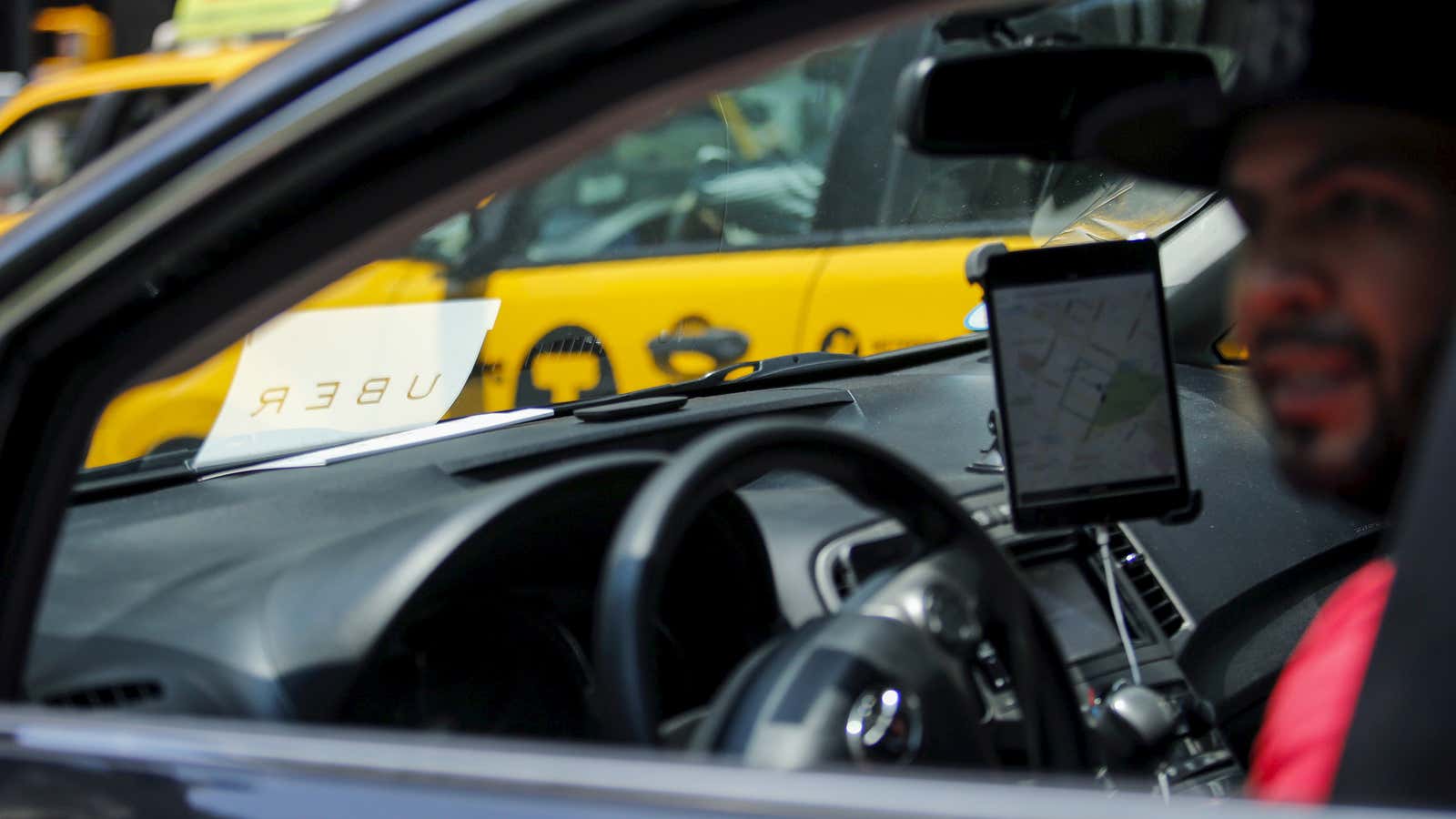Last month, a group of Uber customer service representatives in the US received a script unlike any they’d seen before. For the most part, it was a survey on driver satisfaction, but at the end it switched to another topic: why a union wouldn’t make sense for drivers.
Uber’s customer service reps were told they’d be using the script when contacting the company’s drivers in Seattle. They received a spreadsheet that included the names of thousands of drivers, ordered from most to least active. Over the next several weeks, reps worked their way through more than half of the list. A former customer service rep who was assigned to the calls said Uber didn’t offer much explanation for the new assignment, but she and her teammates made their own assumptions.
“We called it union-busting, to be frank,” says the former rep, whose contract with Uber was terminated earlier this month and who agreed to speak with Quartz if her name was withheld. “It was a complete departure from what we usually do.”
Customer service reps were still making the calls as of this week.
Seattle became the first city in the US to grant Uber drivers the right to collectively bargain in December, when the city council unanimously approved an ordinance on the matter. Since then, Uber has emphasized that a union isn’t necessarily the right fit for its drivers, who ”like to be their own boss” and work vastly different numbers of hours. For example, Uber says 50% drive fewer than 10 hours a week. ”It’s not clear a traditional union can serve such a large and varied group of people,” an Uber spokeswoman told Quartz in a statement.
Uber drivers in Seattle confirmed they’ve recently received calls from the company framed as driver satisfaction surveys, but which seemed intended to dissuade them from union activities. A copy of Uber’s call script obtained by Quartz supports these accounts. In the final paragraph—after drivers said they’d like to learn more about the ordinance—Uber advises that “this is simply a case where collective bargaining and unionization do not fit the characteristics of the work.”
Were drivers to organize, they could in theory negotiate on things like fares, tips, and Uber’s five-star rating system. Even for a company valued at $62.5 billion, that’s an expensive and time-consuming scenario. Uber could take the hit in Seattle, but the real threat is that what happens there inspires collective bargaining efforts across the US.
While Uber drivers have toyed with unionizing before, the conversation has acquired new urgency since the passage of the Seattle ordinance, as well as the sweeping fare cuts that Uber imposed in January. Drivers have protested the cuts from San Francisco to Pittsburgh; at a gathering outside Uber’s office in Queens, New York, last month, drivers handed out cards for membership in the AFL-CIO.
“We need to be paid more, that’s the ultimate goal of the collective bargaining,” says Don Creery, an Uber driver in Seattle since January 2014. “We’re small business owners who are not allowed to charge what we want or need for the service we’re performing.”
By now, many in Seattle are familiar with Uber’s stance on unionization. Ahead of the city council’s vote, Uber strategist and former Obama campaign adviser David Plouffe made headlines when during a local talk he described the ordinance as “puzzling” and ”generally believed to be flatly illegal.”
But the customer service team was new to the debate, and enlisted at a time when their own operations were in turmoil. Uber began outsourcing some of its support roles in late 2014 to low-cost areas such as the Philippines. Last summer, Quartz reported that contracts for US service reps were getting shortened, then not renewed at all as Uber built out its offshore workforce. Uber says it is restructuring its support operations to include service hubs around the world, and that many reps in good standing have been offered job opportunities at these new facilities.
When conflicts between Uber and drivers arose, customer service reps tended to sympathize with the drivers, says the former rep who spoke with Quartz. And as Uber terminated more US-based reps’ contracts, that solidarity increased. “It definitely eroded our loyalty to Uber when they started outsourcing, and we started to feel more like drivers in the way we were treated,” the rep says. ”We didn’t feel [the script] was appropriate at all.”
Uber’s cautions about unionizing aren’t necessarily misguided. There are two federal laws under which Uber could challenge Seattle’s ordinance, and any litigation could take years to resolve. Even were the ordinance to move forward unobstructed, it would likely be a year to 18 months before Uber and its drivers reached any new agreements under collective bargaining, says Mike O’Brien, the Seattle city council member who sponsored it.
Still, slow progress hasn’t slowed interest. O’Brien told Quartz that officials in dozens of cities are interested in what Seattle is doing—from San Francisco to Denver to New York. It’s clear that Uber opposes the ordinance, what’s still unknown is what other steps the company will take to fight it. Everyone is waiting to see what comes next. In the meantime, O’Brien says, ”the city is moving forward with the intention of getting this done.”
